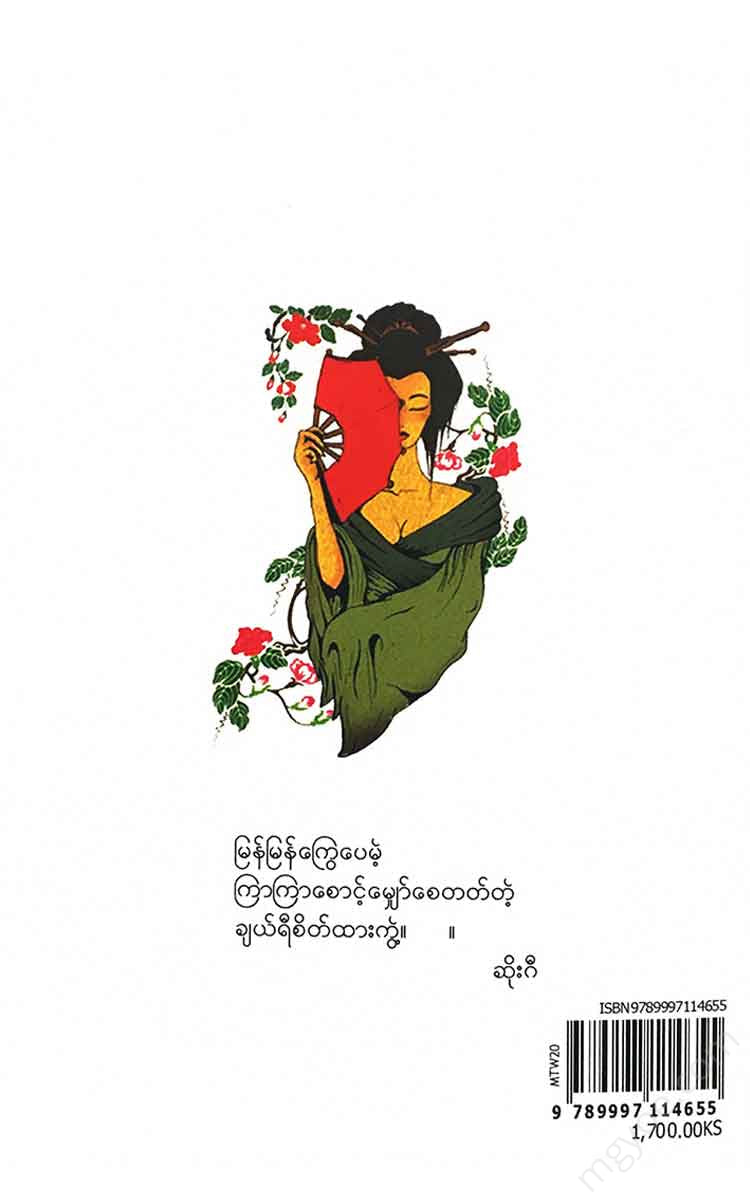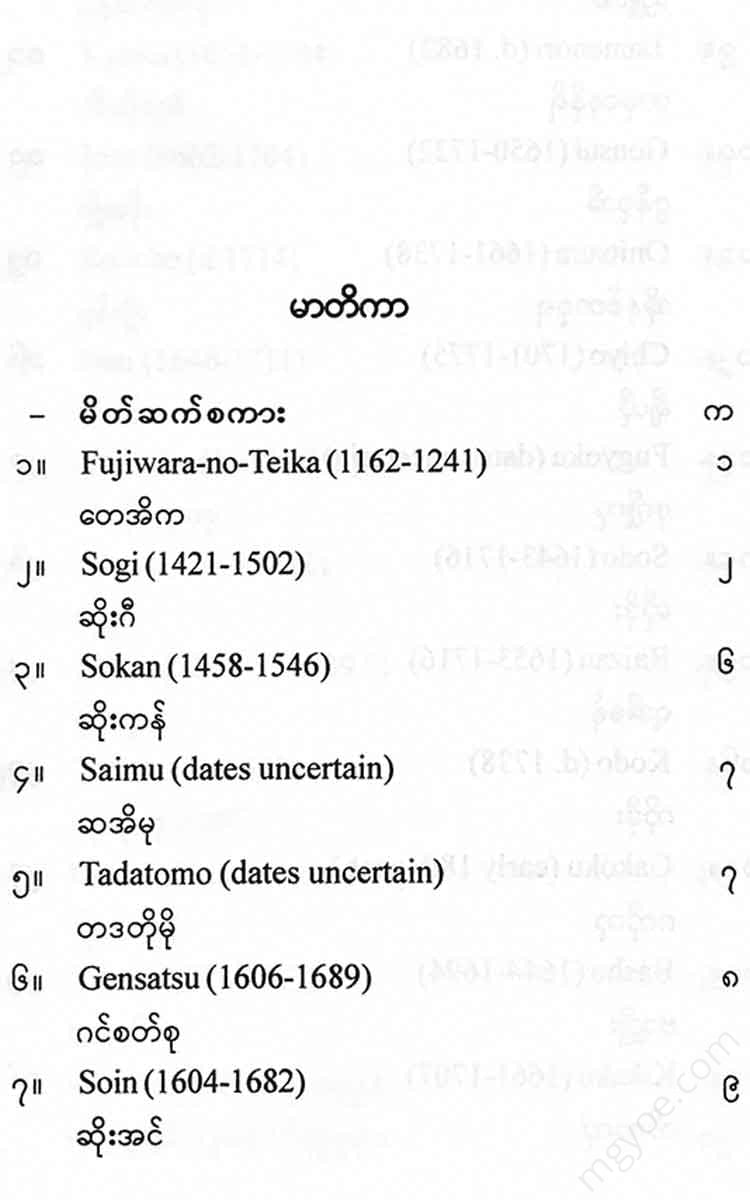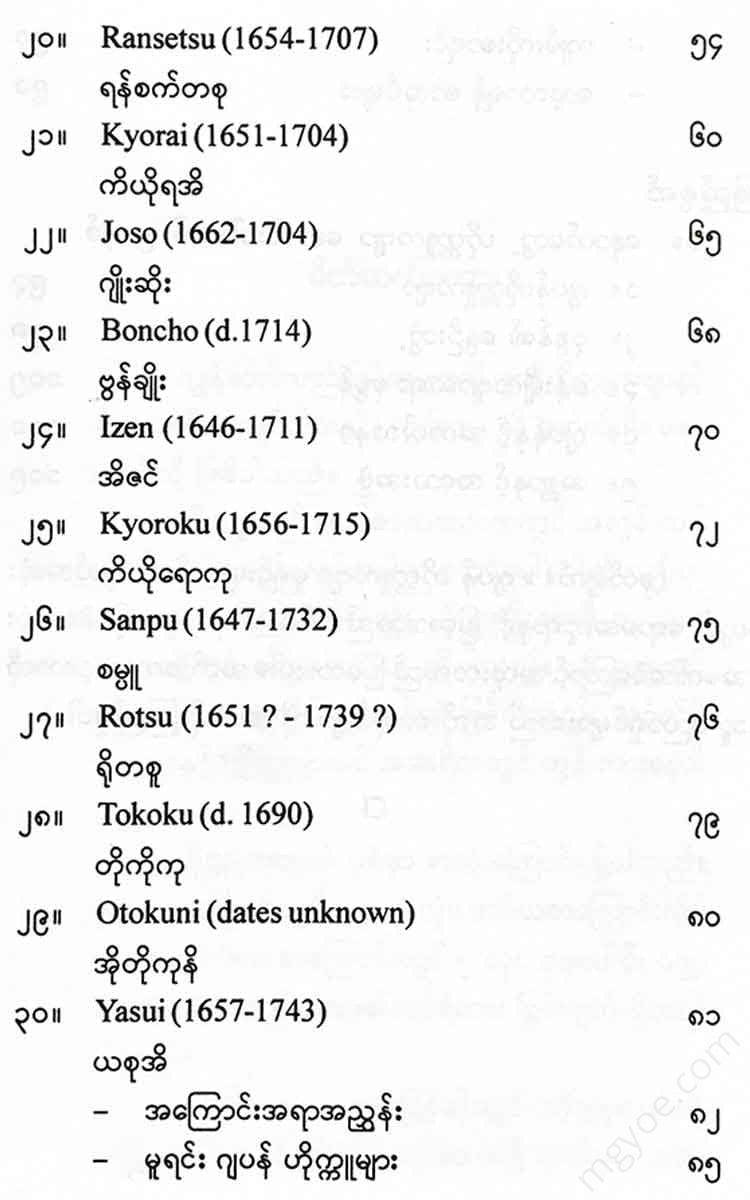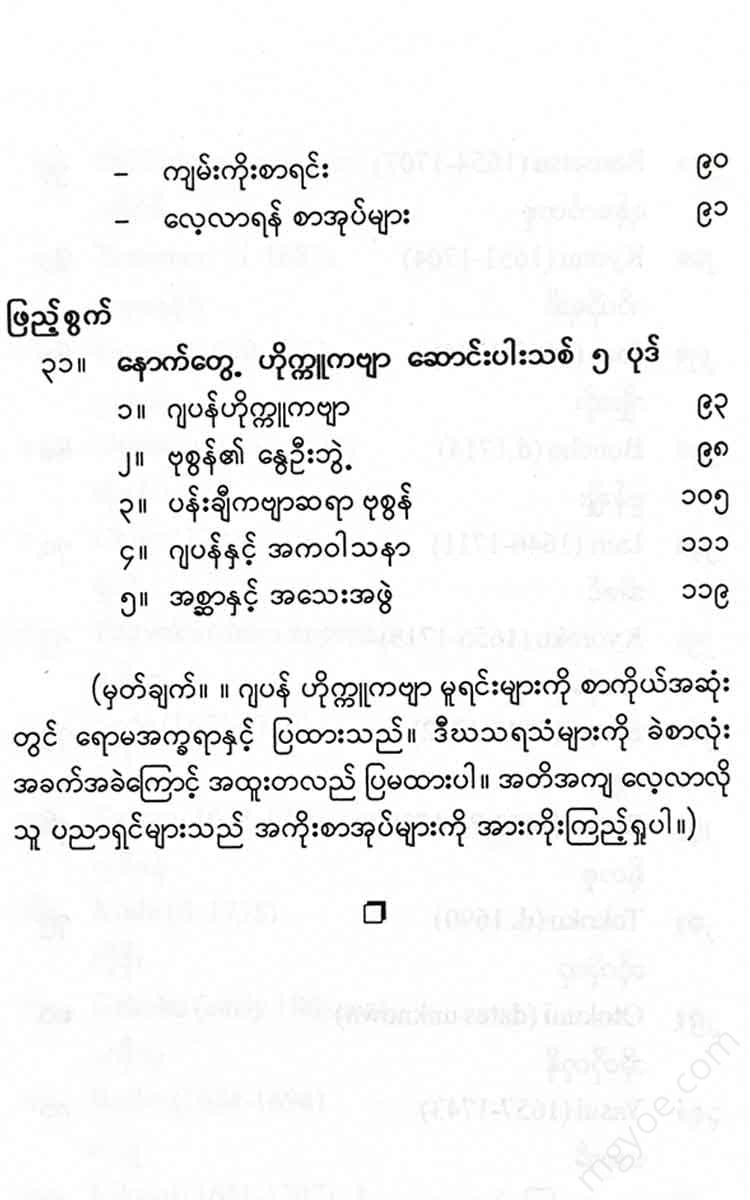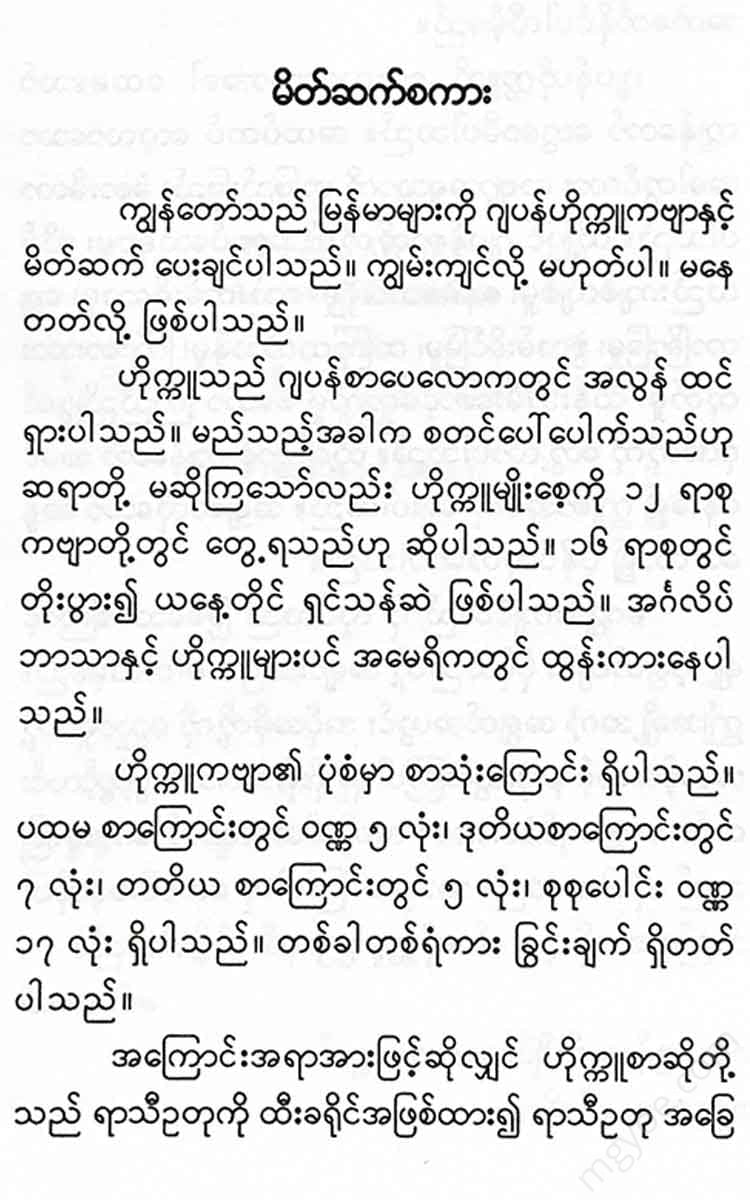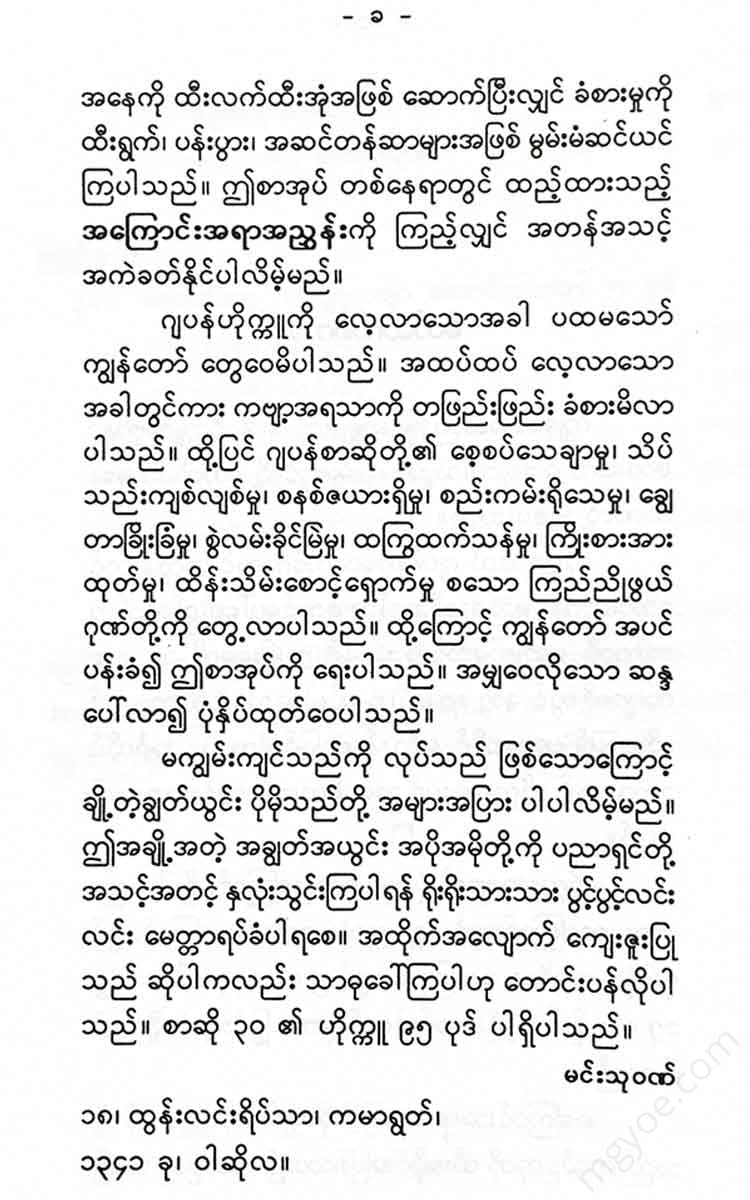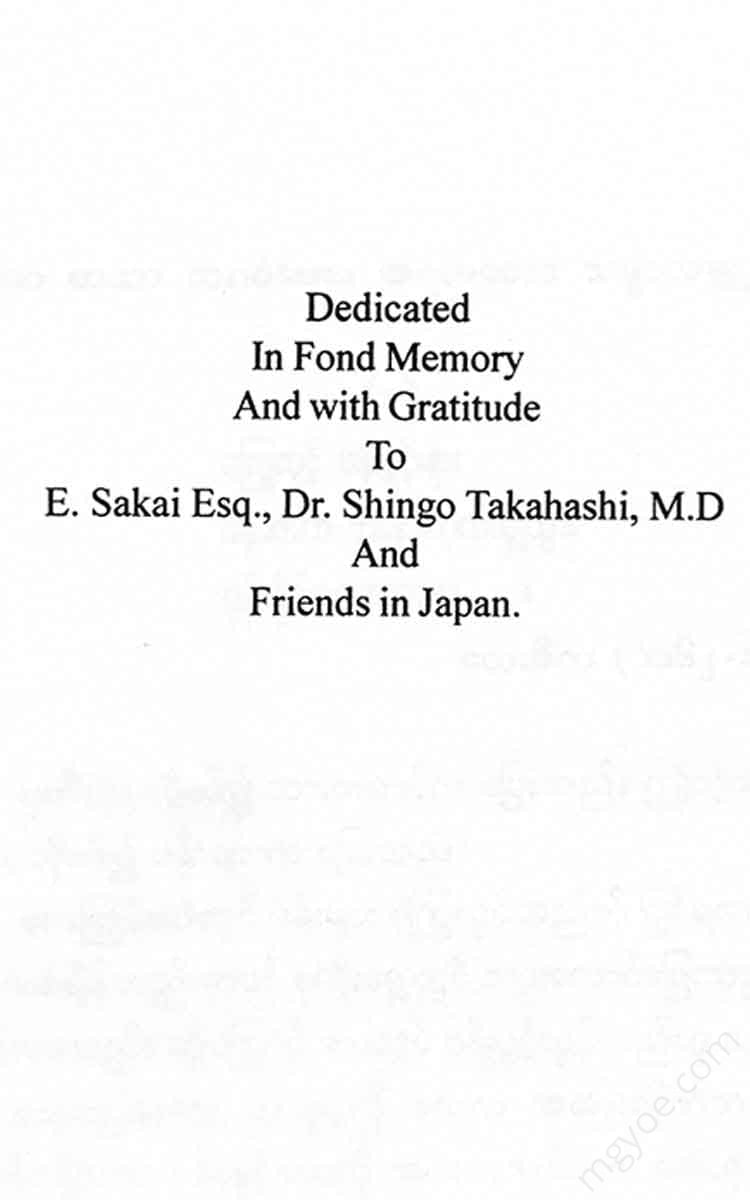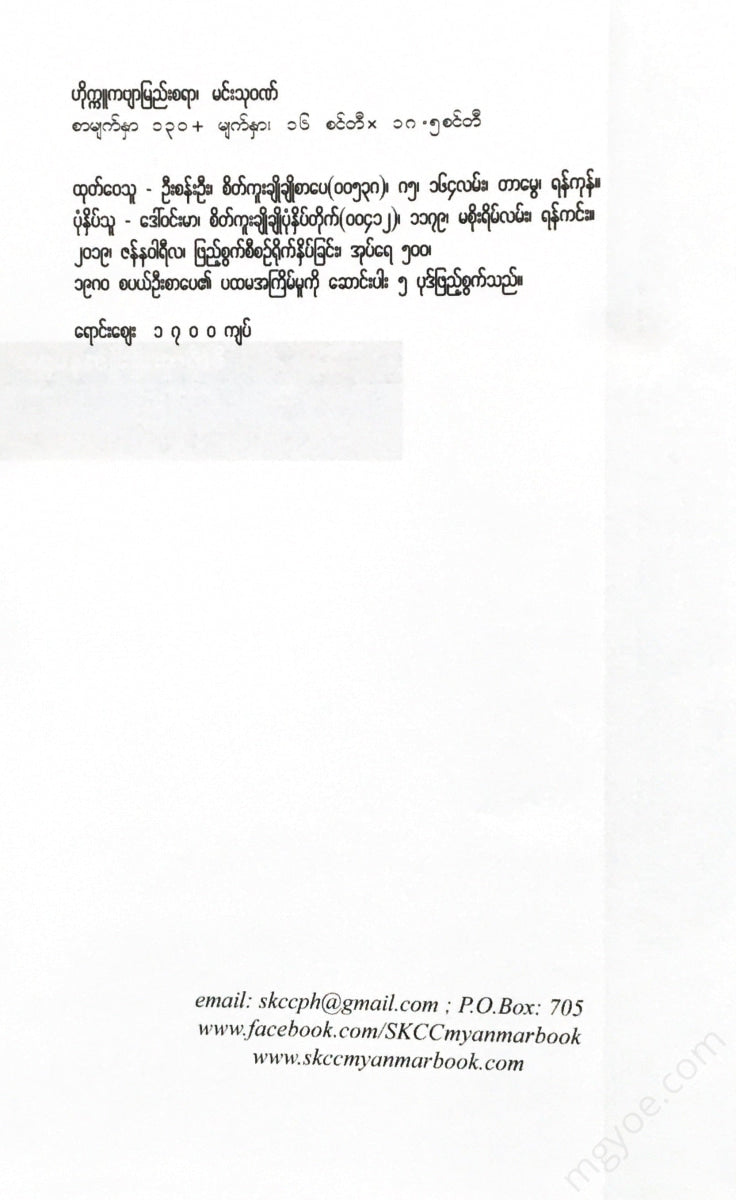စိတ်ကူးချိုချိုစာပေ
Min Thuwan - Haiku Poetry Appreciation
Min Thuwan - Haiku Poetry Appreciation
Couldn't load pickup availability
Fall flowers
Run after me.
A storm..
Teika (1162-1241)
The hunter chases, the prey flees. In the same way, the flowers flee when the storm chases.
The poet, who sees the flowers falling in the wind, simultaneously imagines the prey running before the hunter. Therefore, instead of writing in accordance with nature that the flowers are falling in the wind, he writes that the wind is running the flower, giving life to the lifeless flower and the wind. By writing this way, it seems that the poet is compassionate towards the falling flowers.
The original Japanese word for this poem is simply "pan". Although the word "pan" is commonly used in Japanese literature, it is considered to mean "sakura" in Japanese and "cherry" in English. Cherry blossoms are the national flower that the Japanese people love very much, so when they say "pan", they understand it to mean "sakura".
The poets were Fujiwara, Noh, and Teika. A prominent poet in the early Kamakura period of Japanese history. He was recognized as a good poet from his teenage years. He was also honored by the king. He served as a secretary in the palace. However, he did not agree with the king in terms of his poetic ideas, and in the future he became a minor figure and became obscure. "The ancient poetry collections and prose works that this great poet collected and edited are considered historical milestones for Japanese literature," literary critics have noted.
(2)
A swan in the clouds,
The sound of a lone voice in the ravine
Mountain hiking trail..
Sogi (1421-1502)
When I looked up at the sky, I saw the swans flying in a line in a row. When I looked down, I heard the chirping of the swans in the ravine. On the mountainside, a small path curved and curved. This vision and the rhythm of the poem made the poet's heart happy. Thus, this simple painting poem was born.
The poet is So. So Gi is a monk. He writes calligraphy. He is skilled in tea ceremony. He is good at painting. He loves to travel. He often composes poems while traveling.
During the reign of the Sugi, there was a great love of war. Sugi did not like to hate and kill each other. He had been a nomad for eight years, wandering from place to place to avoid war. Sugi once wrote this to express his feelings.
I am 60 years old. The waves of death are beating against my shore. But my ears are as deaf as Confucius's. I have spent my life carelessly, waiting for the spring flowers, the autumn moon, the morning dew, and the night breeze. The dewdrops of my life are fluttering on the grass. How much longer can I flutter? I am miserable, careless of duty and attached to worldly things, without regard for the cycle.
Even though it falls quickly
It often makes you wait for a long time.
Cherry is upset..
Bad music
In spring, cherry blossoms bloom in abundance. In the yard, the yard is full. In the forest, the forest is full. In the mountains, the mountains are full. The Japanese tigers, each with a bag of rice, go out to enjoy the beauty of the cherry blossoms. People gather under the cherry blossoms. However, the cherry blossoms do not last long. They all fall in a few days. People wait for a year, waiting for that day. This is the meaning of the poem. Is it said with love? Is it said with dissatisfaction? Or is it said with great pride, even the short-lived happiness of worldly wealth that has been sought after for a long time? It is worth considering.
( 4 )
The roadside meadow
Brushing away the morning dew
The water is dark and rainy.
Soggy
The mountain tree, called the water willow or the willow tree, sways in the wind with its long, slender branches. Then the willow leaves, slender as fingers, sway in the wind, as if brushing the dewdrops that glitter on the grass. Here too, did the monk Sogi, seeing the beauty, become enraptured?
( 5 )
The moon has set.
The morning tide is fast.
Summer weather, sea..
Soggy
This is a seascape poem by the artist So Gi. His poems are never free from the artist's brushstrokes. While looking at the moon, which is reflected in the restless sea, the moon disappears into the sea with a shadow. What does So Gi think about the nature of this summer sea? Does he see the ephemeral nature of beauty, the perishable nature, and the unattainable nature? Or is he simply expressing the beautiful nature of the morning?
(6)
In the bamboo hut, let's eat bamboo.
It's also full of energy.
Thanks to parents..
Sokan (1458-1546)
In Japanese, bamboo is called takenoko. The literal meaning of the word is the child of bamboo. So, bamboo, which is called the child of bamboo, must have a parent. That parent is a bamboo tree. Thanks to the bamboo tree, the child of bamboo grows into a bamboo. This is just my opinion. I don't know if it will be lighthearted or humorous.
However, the poet Sokan is said to have written for the sake of his parents. Sokan was a samurai warrior. He was a servant to the king. He was a peer of the king, and he personally contributed to his religious and literary endeavors. However, when his lord fell ill during a campaign and died at a young age, Sokan, seeing the end of his life, became a monk. He lived as a simple boy in a small monastery and wrote haiku while studying literature.
( 7 )
In the old shell
He must conclude for himself.
The fate of the dragonfly.
Sanimu (date unknown)
This poem, written by Sanimu, a cotton merchant in Kyoto, is about the dragonfly. In the summer, the sound of the dragonfly is unavoidable in Japan. Children catch dragonflies, raise them in cages, and listen to their chirping. This Japanese poem, which is close to the life of the dragonfly, is about the dragonfly's skin that was left clinging to a tree, and Sanimu wrote this hokku. It makes you wonder if he was thinking that when it dies, it is nothing more than a skeleton.
( 8 )
Charcoal white
Once upon a time
White branches covered in snow.
Tadatomo (date unknown)
In Japan, there is white charcoal. It is used to boil water during tea ceremonies. When the poet Tadatomo saw this white charcoal, what suddenly appeared before his eyes was a white branch covered with frost in winter. The white charcoal was made by burning this branch. The poet arranged the branch and the charcoal in accordance with the nature of haiku poetry by showing that the branch and the charcoal are connected by this white medium.
(9)
Under the arrow of thought
Suckling mother's milk
Baby deer..
Geng Sengsu (1606-1689)
The author of this poem, Gensatsu, was a physician who died in Kyoto in 1689 at the age of 83. He was known for his ability to play with words.
The young mother, wearing a kimono decorated with arrows, feeds her baby, dressed in deerskin. This scene is depicted as the baby deer, fearless and hungry, sucking its mother's milk to satisfy its hunger, and the mother, fearless and hungry, risking her life to satisfy her baby. However, the poet's cheerful mind, compassionate heart, and ability to see beauty are clearly visible.
(10)
Cherry blossoms
I'm looking forward to it.
The rope is so tight..
So-in (1604-1682)
The poet So-in was a leader who revolutionized the popular aesthetic poetry in their world and introduced a new poetry style that was not poetic, not suitable for the mouth, and ugly and ugly. The original Japanese poem is not as simple as the Burmese translation. It says that the flower hurts because it is looked at. In the Burmese translation, it seems to break So-in's poetic style by adding proverbs to complete the seventeen syllables.
(11)
Worn by snow
The goddess reappears.
Umbrella trunk..
Choe-i (date unknown)

